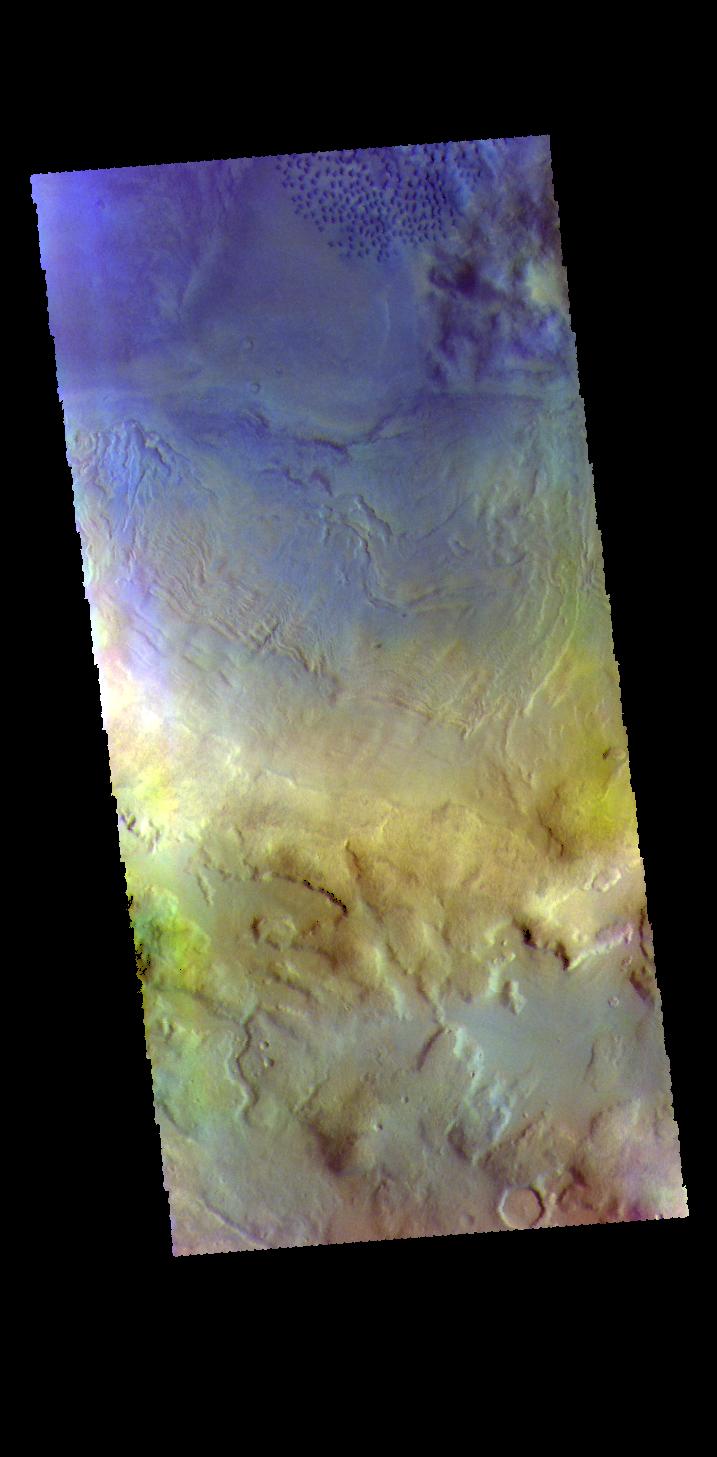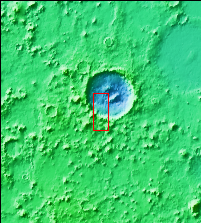
|
Renaudot Crater - False Color
- Click the image above for a larger view
- Full-Res JPEG (717 x 1457) (83.7 kB)
- Full-Res TIFF (717 x 1457) (2.0 MB)
Caption:

Context image
Today's image shows part of the floor of Renaudot Crater, located on the margin between Terra Sabaea and Utopia Planitia. The small dark blue features at the top right corner of the image are sand dunes. Dark blue is this false color combination indicates that these dunes are comprised of basaltic sands.
The THEMIS VIS camera contains 5 filters. The data from different filters can be combined in multiple ways to create a false color image. These false color images may reveal subtle variations of the surface not easily identified in a single band image.
Orbit Number: 63594 Latitude: 41.6455 Longitude: 62.4624 Instrument: VIS Captured: 2016-04-15 03:21
Background Info:
Please see the THEMIS Data Citation Note for details on crediting THEMIS images.
NASA's Jet Propulsion Laboratory manages the 2001 Mars Odyssey mission for NASA's Science Mission Directorate, Washington, D.C. The Thermal Emission Imaging System (THEMIS) was developed by Arizona State University, Tempe, in collaboration with Raytheon Santa Barbara Remote Sensing. The THEMIS investigation is led by Dr. Philip Christensen at Arizona State University. Lockheed Martin Astronautics, Denver, is the prime contractor for the Odyssey project, and developed and built the orbiter. Mission operations are conducted jointly from Lockheed Martin and from JPL, a division of the California Institute of Technology in Pasadena.
Cataloging Keywords:
| Name | Value | Additional Values |
|---|---|---|
| Target | Mars | |
| System | ||
| Target Type | Planet | |
| Mission | 2001 Mars Odyssey | |
| Instrument Host | Mars Odyssey | |
| Host Type | Orbiter | |
| Instrument | Thermal Emission Imaging System (THEMIS) | |
| Detector | ||
| Extra Keywords | Color, Crater, Dune, Thermal | |
| Acquisition Date | ||
| Release Date | 2019-05-31 | |
| Date in Caption | 2016-04-15 | |
| Image Credit | NASA/JPL-Caltech/ASU | |
| Source | photojournal.jpl.nasa.gov/catalog/PIA23255 | |
| Identifier | PIA23255 | |
